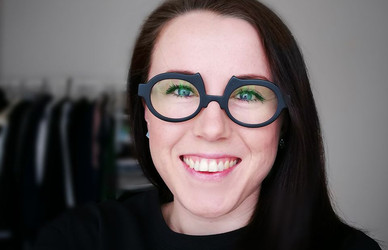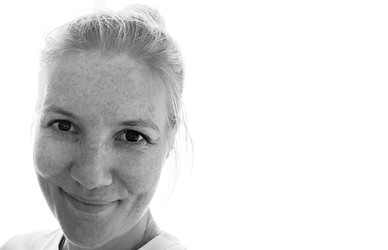Perception is more important than spots
"A core concept of our project is the interaction between the company and the users. If you have to share something as personal as baby clothes, a trusting relationship between the parties is crucial, "says Vibeke Riisberg, PhD and Associate Professor at Design School Kolding.
In recent years, along with Associate Professor, Anne Louise Bang, she has studied the company VIGGA as a case study in a major research and development project about children's fashion, the sharing economy and recycling practices, a project in which the Design School has collaborated with SDU, PlanMiljø and Innovationsnetværket Livsstil – Bolig & Livsstil (Innovation Network Life Style – Housing & Lifestyle).
Spots are not a problem
The initial research was focused on finding a quality of knitting that was both durable and felt soft and cuddly like a baby even after repeated laundering and use. But that part of the task proved to be relatively easy to solve:
"In the beginning we thought that stains would be a big problem, and we therefore designed some knit qualities and in particular patterns where blemishes could be camouflaged. But since the concept had to be started quickly, VIGGA initially chose a good basic quality of organic cotton from its Indian supplier. When we reviewed the clothes after they had been with the users, there were many spots, but the professional laundry managed to remove those for the most part during the washing process. Instead we decided to examine how the aesthetics of the concept were assessed by the user and whether there was a potential emotional barrier in the users' perception of the subscription model and of clothes sharing," says Vibeke Riisberg.
Touch me
The two researchers, in collaboration with Associate Professor, Trine Brun Petersen from SDU, designed an empirical study based on the sociological actor-network theory. In a second study they explored the tactile and form qualities of baby clothes based on the repertory grid method, originally developed within psychology. User studies included the aesthetic preferences of both subscribers and non-subscribers, but also the great, personal storytelling related to baby clothes, explains Associate Professor, Anne Louise Bang:
"We visited the users and brought a variety of fabrics, both samples and finished products. First, we conducted a blind test in which three types of textiles were placed in a non-transparent bag. The parents had to feel and make comments, which provided a lot of useful dialogue about the many soft values associated with children’s clothes in the baby’s first year of life. Virtually everyone started out saying that 'the baby just needs to be warm and feel good', but it turned out that there were many more parameters in play."
A look in the dresser
After the blind test the visual and the practical aspects were also examined, such as preferences for different closures and cuts; and: "... Finally we visited the baby's existing wardrobe," says Vibeke Riisberg:
"We used a semi-structured questionnaire and asked for example what it was like to meet another new mother whose child had exactly the same VIGGA assortment for her child. What did it feel like not to own the clothes and thus being unable to keep them? And what about the whole idea of sustainability? We did a close study of the perception of the entire business model in order to understand the relationship behind the subscription arrangement."
Nudging is useful
And it turned out that the interaction and the aesthetic universe surrounding the clothes were ultimately the most essential factors in the new subscription concept:
"It goes without saying that the whole interaction between VIGGA and the users is far more extensive than if you buy the clothes in a shop, both in terms of how you even explain the concept, but also the subsequent dialogue about the clothes through e.g. Instagram and Facebook. These dialogues nudge the users, so to speak, to take responsibility for the clothes and treat them with respect, in order to make the concept successful," explains Vibeke Riisberg.
The qualitative field work was succeeded by a more extensive survey among users and non-users of VIGGA, which has resulted in a quantification of the collected data. This part of the project was carried out by PlanMiljø , which was also in charge of a comprehensive Life Cycle Analysis (LCA) of the whole concept. In addition to collecting new, valuable knowledge about the durability and sustainability of clothes Design School Kolding has established a catalogue of ideas for VIGGA's continued work on the basis of new parents' emotional and physical requirements for baby clothes.
In 2017, Design School Kolding and the international Cumulus Association will be hosting a large, international conference with the title REDO. The purpose of the conference is to zoom in on design’s role in creating a sustainable future and achieve impact on political decision-making processes. As a prelude to the conference, we will be bringing a series of articles to show Design School Kolding’s research and how we work to bridge the gap between design thinking and design practice.





